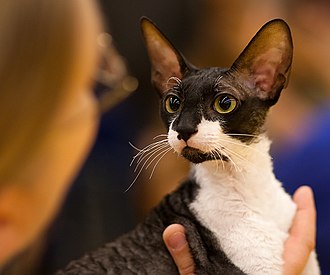Breed-related disease: Irish Setter

The Irish Setter is a setter, a breed of gundog, and a family dog. The term Irish Setter is commonly used to encompass the show-bred dog recognized by the American Kennel Club as well as the field-bred Red Setter recognized by the Field Dog Stud Book. It’s not surprising that this handsome redhead comes from Ireland, which is famous for fine and beautiful dogs. The Irish […]
Breed-related disease: Cornish Rex

A Cornish Rex is a breed of domestic cat. The Cornish Rex has no hair except for down. Most breeds of cat have three different types of hair in their coats: the outer fur or “guard hairs”, a middle layer called the “awn hair”; and the down hair or undercoat, which is very fine and about 1 cm long. Cornish Rexes only have the undercoat. They […]
KNOWING THE THREAT OF CANINE BABESIOSIS

Maigan Espinili Maruquin Our pets are members of our family. And like the other members, they need care, love, and attention. We spend most of our time in the work, school, and other daily activities we have, which lessens the time we spend with our pets. However, we should also listen to our companions who […]
Case report: systemic tuberculosis caused by Mycobacterium bovis in a cat- Abstract

Source: https://bmcvetres.biomedcentral.com/articles/10.1186/s12917-018-1759-7 Mycobacterium bovis was isolated from the lungs, bronchial and gastrointestinal lymph nodes, kidney and liver of a 5-year-old stray male cat. The isolate was confirmed as M. bovis using the Genotype MTBC assay (Hain Lifescience, Germany), which allows differentiation of species within the Mycobacterium tuberculosis complex. The Systemic tuberculosis was diagnosed via […]
Breed-related disease: Saint Bernard

The St. Bernard or St Bernard is a breed of very large working dog originated in Switzerland along with several other breeds, including the Bernese Mountain Dog, Entlebuch Cattle Dog, Appenzell Cattle Dog, and Greater Swiss Mountain Dog. They probably were created when dogs native to the Alps were crossed with Mastiff-type dogs that came […]
Breed-related disease: Savannah Cat

The Savannah cat is the largest of the cat breeds. A Savannah cat is a cross between a domestic cat and a serval, a medium-sized, large-eared wild African cat. The unusual cross became popular among breeders at the end of the 1990s, and in 2001 The International Cat Association (TICA) accepted it as a new registered breed. In May […]

